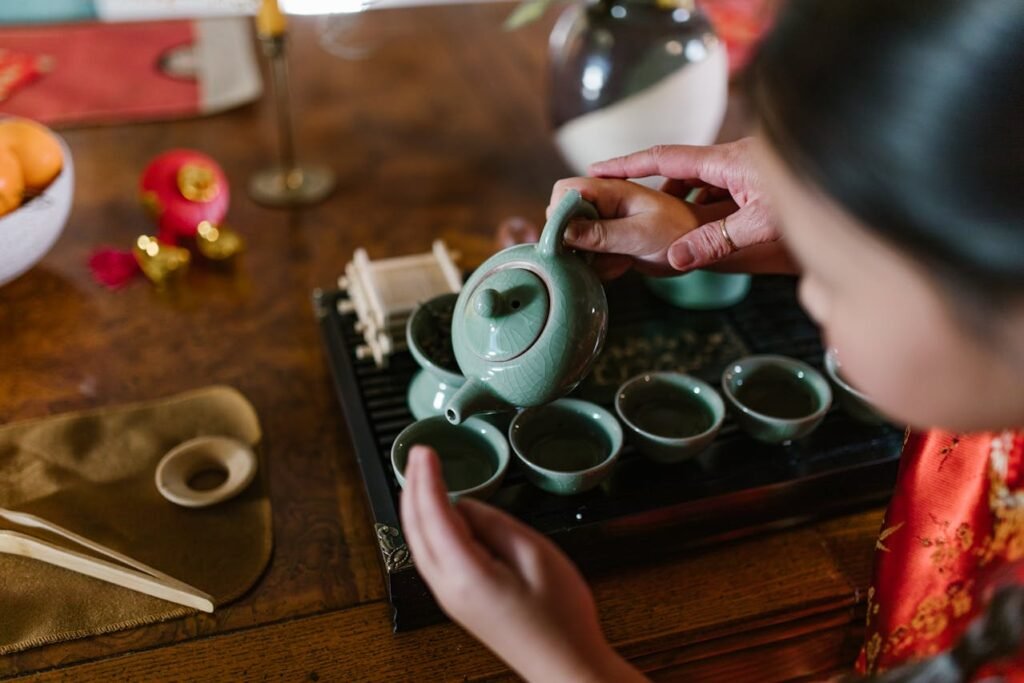As a parent, you are constantly thinking about the future. You strive to provide your child with the tools, skills, and perspectives they need to thrive in a world that is more interconnected and dynamic than ever before. In this global landscape, few skills offer a more profound and lasting advantage than bilingualism. And among the world’s languages, Mandarin Chinese stands out as a gateway to immense cultural, cognitive, and professional opportunities.
Choosing to enroll your child in Chinese classes is a visionary first step. It is an investment in their future, a gift of global citizenship. But the journey of language acquisition does not begin and end at the classroom door. It is nurtured and solidified in the one place your child feels safest and most supported: at home. You, the parent, are the cornerstone of this journey. You are your child’s chief cheerleader, their practice partner, and the architect of an environment that can make learning feel less like a task and more like a joyful adventure.
This guide is for you. It doesn’t matter if you don’t speak a word of Mandarin yourself. Your enthusiasm, encouragement, and strategic support are the most critical factors in your child’s success. We will walk you through the essential roles you can play—from cultivating a positive mindset and creating an immersive home environment to partnering with their teachers and overcoming the inevitable hurdles along the way. Your support is the secret ingredient that will transform your child’s language education from a simple subject into a lifelong passion.
Table of Contents
TogglePart 1: Cultivating a Positive Mindset (The “Why”)
Before you label a single item in your house or download a single app, the most important groundwork you can lay is mental and emotional. A child’s attitude towards learning is shaped by the adults around them. Your perspective will become their reality.
Focus on the Journey, Not Just the Destination
It’s natural to dream of the day your child is fluently conversing in Mandarin. However, fixating on “fluency” as the only measure of success can create immense pressure and anxiety. Language learning is a marathon, not a sprint. Instead, shift the focus to celebrating the journey. Did your child correctly identify a new character? Celebrate it. Did they bravely say “你好” (nǐ hǎo) to someone? That’s a huge win. Did they learn the words to a simple Chinese song? It’s time for a happy dance. By acknowledging and praising these small, incremental steps, you teach them to find joy in the process of learning itself. This fosters resilience and a “growth mindset,” the belief that abilities can be developed through dedication and hard work.
Embrace Mistakes as Stepping Stones
Imagine trying to learn a new, complex skill as an adult. You would inevitably make mistakes. For a child learning a language as different from English as Mandarin—with its unique tones and logographic characters—mistakes are not just likely; they are essential. Every mispronounced tone or incorrectly written stroke is a crucial piece of feedback. It’s the brain actively trying to figure out a new system.
Your role is to create a “safe space” for these errors. When your child struggles with a word, respond with patience and positivity. Instead of saying “That’s wrong,” try “That was a great try! It sounds a little like this, let’s try it together.” By normalizing mistakes, you remove the fear of failure, which is one of the biggest inhibitors to language acquisition. You are teaching them that it’s okay to be vulnerable, to try, and to try again. This is a life lesson that extends far beyond the language classroom.
Frame it as a “Superpower”
For a young child, abstract concepts like “future career opportunities” are meaningless. You need to connect learning Chinese to their world. Frame it as gaining a cool, new superpower. “Did you know that you’re learning to talk in a secret code that over a billion people in the world understand?” or “Learning Chinese is like unlocking a new level in a video game that lets you explore amazing new worlds.” This sense of wonder and excitement is far more motivating than any lecture on the importance of global markets. This approach transforms a potentially intimidating subject into a thrilling quest.
Part 2: Creating an Immersive Home Environment (The “How” – At Home)
Your home is your most powerful tool. By weaving Chinese into the fabric of your daily life, you provide constant, low-pressure reinforcement of what your child learns in their formal classes. This doesn’t require a huge budget or fluency on your part—just a little creativity and commitment.
The Power of Labels
This is one of the simplest and most effective tactics. Create labels with the Chinese characters, the Pinyin (the romanized spelling), and the English word for common household items. Stick them on the door (门 – mén), the table (桌子 – zhuōzi), the chair (椅子 – yǐzi), the refrigerator (冰箱 – bīngxiāng), and even their favourite toys (玩具 – wánjù). This passive learning strategy helps to build a foundational vocabulary and familiarizes your child with the look of Chinese characters. You can make a game out of it: “Can you bring me the cup (杯子 – bēizi)?” or “Let’s go to the door (门 – mén)!”
Screen Time for Good
In the modern world, screen time is a reality. The key is to make it productive. There is a wealth of high-quality Chinese-language content for children that is both entertaining and educational.
- Cartoons: Many popular Western cartoons are expertly dubbed in Mandarin. Shows like Peppa Pig (小猪佩奇 – Xiǎo zhū pèiqí) are fantastic because the language is simple, repetitive, and centered on everyday family life. Hearing familiar characters speak Mandarin makes the language feel accessible and fun.
- Educational Apps: Apps like HelloChinese, Duolingo, or Gus on the Go offer gamified learning experiences that can supplement formal lessons. They are great for practicing vocabulary and character recognition in short, engaging bursts.
- Music and Songs: Search on YouTube or Spotify for Chinese children’s songs (中文儿歌 – zhōngwén ér’gē). Simple songs like “Two Tigers” (两只老虎 – Liǎng zhī lǎohǔ) or “Twinkle Twinkle Little Star” (一闪一闪亮晶晶 – Yī shǎn yī shǎn liàngjīngjīng) use repetitive lyrics and catchy tunes that make memorization effortless. Play them in the car or during playtime.
Storytime in a New Language
Reading together is a cherished bonding activity, and it can be a wonderful part of your child’s language journey. Look for bilingual books that show the text in both English and Chinese. As you read the English, you can point to the Chinese characters, helping your child to associate the sounds and meanings with the written symbols. For slightly more advanced learners, there are beautifully illustrated Chinese storybooks. Even if you can’t read them yourself, you can look at the pictures together and ask your child if they recognize any characters they learned in class.
Taste the Culture
Connect language to the sensory experience of food. Involve your child in cooking a simple Chinese dish, like scrambled eggs with tomatoes (西红柿炒鸡蛋 – xīhóngshì chǎo jīdàn) or making dumplings (包饺子 – bāo jiǎozi). As you shop for ingredients and cook together, you can learn the Chinese words for tomato (西红柿), egg (鸡蛋), and flour (面粉 – miànfěn). This multi-sensory approach creates strong memory associations and makes learning feel relevant and delicious.
These home-based activities provide the daily nourishment that helps the seeds planted in a formal classroom grow strong. A structured class provides the essential grammar, pronunciation, and curriculum, while your efforts at home provide the fertile soil for that knowledge to flourish. At LC Chinese School, we provide the expert instruction and foundational knowledge that you can then reinforce with these fun, daily activities. Discover how our curriculum creates the perfect starting point for your family’s adventure by exploring our Flexible Classes.
Part 3: The Role of Structured Learning (The “How” – The School)
While home immersion is vital, it cannot replace the focused, expert guidance of a formal learning environment. A dedicated Chinese school provides the structure, expertise, and social interaction that are essential for building a strong and accurate linguistic foundation.
Why a Formal Class is Essential
- Structured Curriculum: A good language school follows a carefully designed curriculum that introduces concepts in a logical, progressive order. This ensures there are no gaps in your child’s learning and that they build systematically from basic pronunciation to complex grammar.
- Expert, Native-Speaking Teachers: This is perhaps the most critical element. A qualified, native-speaking teacher provides an authentic model for pronunciation and tones, which are notoriously difficult aspects of Mandarin. They can correct errors in real-time and explain nuances that a non-native speaker simply cannot.
- Peer Interaction: Learning with other children is highly motivating. It provides a low-stakes environment for your child to practice speaking and listening. They build camaraderie, play language games, and learn from each other’s successes and mistakes. This social aspect makes learning fun and reduces the feeling of being “put on the spot.”
Building a Partnership with the Teacher
Your child’s teacher is your greatest ally. Establish a positive, open line of communication from the beginning. Attend parent-teacher meetings and don’t be afraid to ask questions.
- “What topics are you covering in the next few weeks so I can support them at home?”
- “Are there any specific areas where my child is excelling or struggling?”
- “Do you have any recommendations for books or media that would align with your lessons?”
By working as a team, you and the teacher can create a seamless learning experience that bridges the classroom and the home. This partnership shows your child that their Chinese education is a priority for the most important adults in their life.
Choosing the right school is a critical decision. You want a place that not only teaches the language but also nurtures a love for learning. At LC Chinese School, our experienced, native-speaking instructors, small class sizes, and engaging teaching methods are designed to do just that. We believe in building a strong partnership with parents to ensure every child has the support they need to succeed. See if our approach is the right fit for your family by looking into our Flexible Classes.
Part 4: Overcoming Common Hurdles (Troubleshooting)
The path to bilingualism is rarely a straight line. There will be bumps, plateaus, and moments of frustration. Your calm and steady guidance during these times is crucial.
When They Say, “It’s Too Hard!”
This is an inevitable complaint. When it arises, first validate their feelings: “I know it feels really tricky right now. Learning something new is hard work.” Then, help them break it down. Perhaps they’re overwhelmed by a long list of vocabulary. Focus on just three new words for the day. If a particular character is difficult to write, turn it into art by drawing it in a sand tray or with finger paint. Shift the focus from the struggle to a fun, low-stakes activity. The goal is to short-circuit the frustration and reconnect with the joyful aspects of learning.
Maintaining Motivation for the Long Haul
The initial excitement of starting something new can fade. To maintain motivation over the long term, you need to continually connect the language to real-world, enjoyable experiences.
- Find a Pen Pal: Connect with another family whose child is also learning Chinese, or find a safe, moderated online platform for a language exchange.
- Visit a Chinese Supermarket or Restaurant: Go on a “field trip” and let your child be the “expert.” Task them with identifying items on the shelves or ordering a dish for the family in Chinese.
- Set Fun Goals: Plan a future trip to a Chinese-speaking country or even to a local Chinatown. Frame their learning as “training” for this exciting adventure.
Balancing with Other Activities
Children today are often over-scheduled. It’s important that Chinese practice doesn’t feel like just another burdensome homework assignment. Integrate it into routines you already have. Listen to Chinese songs during the drive to soccer practice. Practice counting in Mandarin while setting the table. Review flashcards for five minutes before bed. These small, consistent “language snacks” can be more effective and less stressful than trying to carve out a large, dedicated block of time every day.
Conclusion: You Are Their Most Important Teacher
Your child’s Chinese language journey is one of the most valuable adventures you will ever facilitate for them. While you may not be able to teach them the intricacies of grammar or the nuances of tone, you are teaching them something far more important: the resilience to face a challenge, the joy of discovery, and the confidence to engage with a world beyond their own backyard.
By creating a positive mindset, fostering an immersive home environment, and partnering with a dedicated school, you provide a three-pillared foundation for success. You are their guide, their cheerleader, and their constant source of encouragement. You are showing them that you believe in their ability to achieve something remarkable. And that belief is the most powerful language of all.
Ready to embark on this incredible journey with your child? Give them the gift of a global future. Let us provide the expert instruction while you provide the love and support. Take the next step and enroll your child at LC Chinese School today. Register now for our Flexible Classes and watch them soar.








